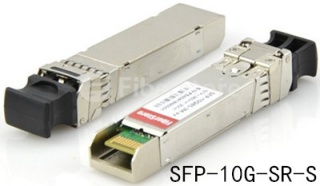The Evolution of 10GbE Cabling Technologies
četvrtak , 03.03.2016.Since Ethernet technology is born in 1970s, it has evolved continuously to meet the never-ceasing demands of even faster rates of data transmission, such as 10 Gigabit Ethernet (GbE). Along with this ongoing evolution, the cabling technologies that support the 10GbE applications have also advanced, so as to provide greater bandwidth to transmit data with reasonable cost and decreased complexity. Maybe you have few insights in this evolution. Don’t worry. This text mainly talks about the evolution of 10GbE cabling technologies, including fiber and copper cabling technologies.
The Institute of Electrical and Electronics Engineers (IEEE) 802.3 working group has published several standards regarding 10GbE, including 802.3ae-2002 (fiber -SR, -LR, -ER), 802.3ak-2004 (CX4 copper twin-ax InfiniBand type cable), etc. Actually, the evolution of cabling technologies have walked in step with that of 10GbE standards, especially associated with the difference between IEEE802.3ae and IEEE802.3ak standards.
IEEE802.3ae
Ratified in June 2002, the IEEE802.3ae standard outlined the following port types.
10GBASE-SR—It supports 10GbE transmission over standard multi-mode fiber (MMF) with distances of 33m on OM1 and 86m on OM2. Using 2000 MHz/km MMF (OM3), up to 300-m link lengths are possible. Using 4700 MHz/km MMF (OM4), up to 400 meter link lengths are possible. Like SFP-10G-SR-S (shown below), this Cisco 10GBASE-SR module listed in Fiberstore is able to support up to 300m using OM3 at the maximum data rate of 10.3125Gbps. In addition, SR is the lowest-cost optics (850nm) of all defined 10GbE optics.
10GBASE-LR—This port type uses higher cost optics (1310nm) than SR and requires more complex alignment of the optics to support 10km link length over single-mode fiber (SMF).
10GBASE-ER—It’s a port type for SMF and uses the most expensive optics (1550nm) lasers, enabling a reach of 40km over engineered links and 30km over standard links.
IEEE802.3ak
Approved in February 2004, this IEEE802.3ak standard only defined 10GBASE-CX4—the first 10GbE copper cabling standard.
10GBASE-CX4—It’s a low-cost 10GbE solution intended for copper cabling with short-distance connectivity. Its affordability and wide availability makes 10GBASE-CX4 ideal for wiring closet and data center connectivity.
The CX4 standard transmits 10GbE over four channels using twin-axial cables which originated from Infiniband connectors and cable. The CX4 standard committee defined that the cables should be tighter in electrical specifications. Therefore, CX4 standard is not appropriate when longer length (>10 Infiniband cable is required. And It’s recommended to use only cables that are designed to meet IEEE 802.3ak specifications.
Another aspect of the CX4 cable is the rigidity and thickness of the cable. The longer the length used, the thicker the cable is. CX4 cables must also be factory-terminated to meet defined specifications.
After comparison between IEEE802.3ae and IEEE802.3ak standards, here goes a picture about the cabling cost and distance considerations.
Besides IEEE802.3ae and IEEE802.3ak standards, there also exists IEEE802.3an standard. Proposed in November 2002, IEEE802.3an defined 10GBASE-T using unshielded twisted-pair (UTP) style cabling. The goal of this copper standard is to improve the performance and distance of copper cabling at a cost that is lower or similar to fiber.
From the above introduction, the evolution of cabling technologies is associated with the evolution of 10GbE standards. As 10GbE deployment becomes a commonplace, it’s of great importance to make wise cabling strategies.
Conclusion
Spurred by the demand for faster application speeds, cabling technologies evolved to support the 10GbE standards, thus to better accommodate bandwidth-intensive applications and traffic types. With 10GbE technology being pervasive, it’s necessary to understand the the different 10GbE standards and cabling technologies (mentioned above). Fiberstore supplies 10GbE application solutions, transceivers, copper and fiber cables all included, like AFBR-703SDZ-IN2, a 10GBASE-SR SFP+ transceiver. For more information about 10GbE system solutions, you can visit Fiberstore.
Originally published at www.fiber-optic-components.com/the-evolution-of-10gbe-cabling-technologies.html
komentiraj (0) * ispiši * #


